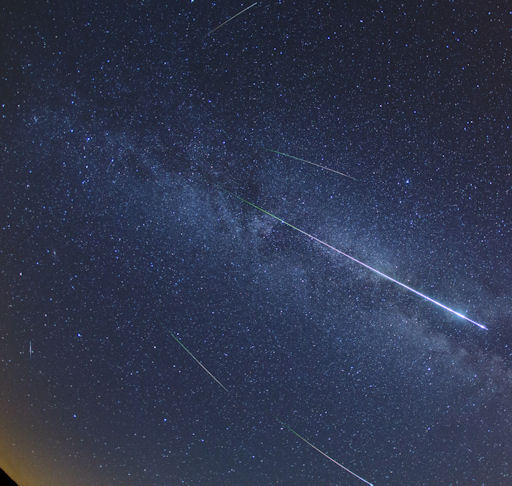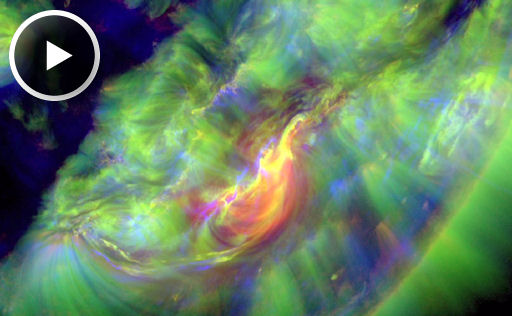Listen to radar echoes from satellites and meteors, live on listener-supported Space Weather Radio. | | | THE PERSEID METEOR SHOWER IS UNDERWAY: Earth is passing through a stream of debris from Comet Swift-Tuttle, source of the annual Perseid meteor shower. Worldwide observers are now reporting more than 100 Perseids per hour. Forecasters recommend looking during the dark hours before dawn when activity is expected to be highest. Last night in Weikersheim, Germany, amateur astronomer Jens Hackmann photographed these Perseids traveling along the Milky Way: 
"I saw about 30 meteors in two hours," reports Hackmann. "Here is a stack of the six brightest meteors including one fireball that was at least 70 degrees long." Realtime Perseid Photo Gallery Got clouds? Tune into SpaceWeather Radio for live echoes from Perseid meteors flying over the US Space Surveillance Radar in Texas. If you're out looking for Perseids before sunrise on Monday, Aug. 13th, face east. The crescent Moon and Venus are in conjunction right in the middle of the meteor display. It's a beautiful way to begin the day. [sky map] M-CLASS SOLAR FLARE: Sunspot AR1540 erupted on August 11th, producing a long-duration M1-class solar flare that peaked around 1220 UT. NASA's Solar Dynamics Observatory recorded the extreme ultraviolet flash: 
The explosion hurled a faint cloud of plasma into space. Judging from the blast site's off-center location on the solar disk, the cloud is probably not heading for Earth. This conclusion is uncertain, however. Stay tuned for additional analysis. Solar Flare alerts: text, phone. Realtime Space Weather Photo Gallery
Realtime Noctilucent Cloud Photo Gallery
[previous years: 2003, 2004, 2005, 2006, 2007, 2008, 2009, 2011] Potentially Hazardous Asteroids ( PHAs) are space rocks larger than approximately 100m that can come closer to Earth than 0.05 AU. None of the known PHAs is on a collision course with our planet, although astronomers are finding new ones all the time. On August 12, 2012 there were 1325 potentially hazardous asteroids. Notes: LD means "Lunar Distance." 1 LD = 384,401 km, the distance between Earth and the Moon. 1 LD also equals 0.00256 AU. MAG is the visual magnitude of the asteroid on the date of closest approach. | | The official U.S. government space weather bureau | | | The first place to look for information about sundogs, pillars, rainbows and related phenomena. | | | Researchers call it a "Hubble for the sun." SDO is the most advanced solar observatory ever. | | | 3D views of the sun from NASA's Solar and Terrestrial Relations Observatory | | | Realtime and archival images of the Sun from SOHO. | | | from the NOAA Space Environment Center | | | the underlying science of space weather | | 
